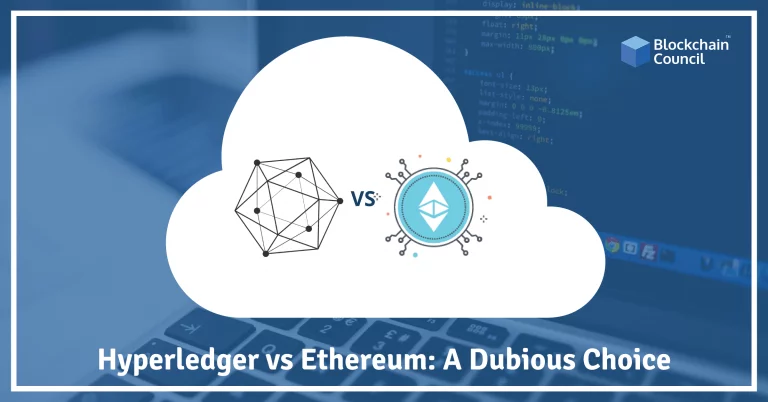
- Toshendra Kumar Sharma
- September 27, 2018
The year 2018 is just a few months away from coming to an end. It has been a year popular for things like matcha to sriracha and all things sparkly, and of course Blockchain. The concept of blockchain technology has taken over every little space of our lives in some way or the other.
Hence, the rise in demand for Blockchain qualified professionals is also increasing steadily. This means that there is a surge in certifications in the blockchain space but the confusion whether one should get qualified in Hyperledger or Ethereum lingers on. Hyperledger and Ethereum are two of the leading platforms of the blockchain. Though both are platforms of the blockchain, they’re significantly different in their use cases and applications.
To understand the differences between these two platforms we need to look at their definitions and what they imply.
What is Hyperledger?
Hyperledger is an open source development project to benefit an ecosystem of Hyperledger based solution providers and users. It is focused on blockchain related use cases that work under a variety of industrial sectors. It is an open source banner project hosted by the Linux Foundation. It has multiple frameworks under it.
- Hyperledger Fabric
- Hyperledger Sawtooth
- Hyperledger Iroha
- Hyperledger Indy
- Hyperledger Burrow
Hyperledger Fabric was initially contributed by Digital Asset and IBM. It uses Go or Java as a programming language, and consensus can be reached in a variety of ways.
What is Ethereum?
Ethereum is an open source platform that allows developers to build and deploy decentralized applications using smart contracts which are programmed in the Solidity language. It is a public blockchain network with its own built-in cryptocurrency called Ether. Ethereum’s public nature makes it a natural fit for developers.
Hyperledger vs Ethereum
The most crucial difference between Hyperledger and Ethereum is the way they are designed and their target audience. Ethereum is targeted towards applications that are distributed in nature with EVM, smart contract and a public blockchain. On the other hand, Hyperledger targets businesses wanting to improvise their process with the aid of blockchain technology. It has a very modular architecture and provides a lot of flexibility concerning the components you want to integrate or not.
This table below elaborates the differences between Hyperledger and Ethereum.
| Points of Difference | Hyperledger | Ethereum |
| Purpose | A private network where read/write access depends on permission. | A public network where all the peers have the read/write access. |
| Confidentiality | It has scope for private transactions and limited accessibility with encryption keys. | It is transparent with each transaction visible to all the peers. |
| Consensus Mechanism | It does not have mining. Instead, there is a Pluggable Consensus Algorithm called the Practical Byzantine Fault Tolerance (PBFT). | It establishes the consensus mechanism through mining based on the Proof of Work(PoW) algorithm. |
| Programming Language | Chaincodes are written in Golang. | Smart Contracts are usually written in Solidity. |
| Tokens | One can create custom tokens via chaincode. | One can create custom tokens via Coin API. |
| Transaction Cost | There are no transaction fees to be paid. | A transaction fee must be paid using the gas approach. |
As you can see, the two platforms are not only different in their purpose but also in consensus mechanism. In Ethereum all the nodes (network participants) are required to reach consensus over all the transactions. For this purpose, the mining is based on Proof of Work (PoW.) Whereas Hyperledger allows nodes to choose between No-op, i.e. no consensus is required instead there is an agreement protocol called Practical Byzantine Fault Tolerance (PBFT) where two or more parties can agree on a key in such a way that both influence the outcome. This way Hyperledger provides greater scalability and privacy.
Moreover, the programming language for both of them is different as well. While Hyperledger chaincodes are written in the Golang (which was developed by Google), smart contracts are written in Solidity.
Currently, Ethereum is a more mature platform, functioning since July 2015. Hyperledger, on the other hand, was launched in July 2017, yet it has picked up its areas of business quite quickly. Both of them serve a different purpose; hence one should think through before getting a certification. Industries looking for Blockchain solutions also have to examine carefully as to which platform suits their needs.





































































 Guides
Guides News
News Blockchain
Blockchain Cryptocurrency
& Digital Assets
Cryptocurrency
& Digital Assets Web3
Web3 Metaverse & NFTs
Metaverse & NFTs
